At the start of my wildlife photography journey, I wasn’t at all bothered about capturing images of ducks. In fact, I can’t think of a subject I was less interested in. All these years later, I have developed an appreciation of wildfowl, although some species grab my attention more than others. One of these is the goldeneye.
Whenever you read about the goldeneye, there will usually be a reference to the James Bond film of the same name. I was not a fan of the Pierce Brosnan Bond era, and the GoldenEye theme tune was not Tina Turner at her (simply the) best – so the name has negative connotations. But I digress. It is not the fault of the goldeneye duck that MGM Studios took its name in vain.
Name aside, the drake goldeneye does have another thing in common with Bond, James Bond: tried and tested methods for attracting the ladies. However, while 007 is known for playing it cool, the goldeneye lets his feathers get ruffled – which is the behaviour that makes them a fascinating (and sometimes frustrating) subject to point your lens at.
Courtship contortions
Let’s face it, when you’re watching goldeneye ducks on a freezing winter day and you can no longer feel your fingers or toes, the possibility of witnessing their complex courtship display is the hope that prevents you from giving up and going to find a hot drink. Well, it is for me. In winter and early spring, males perform a series of fourteen movements that they choreograph into a dance routine to impress the females – a few of which I managed to capture on a recent trip to Hogganfield Loch.
Neck on the water
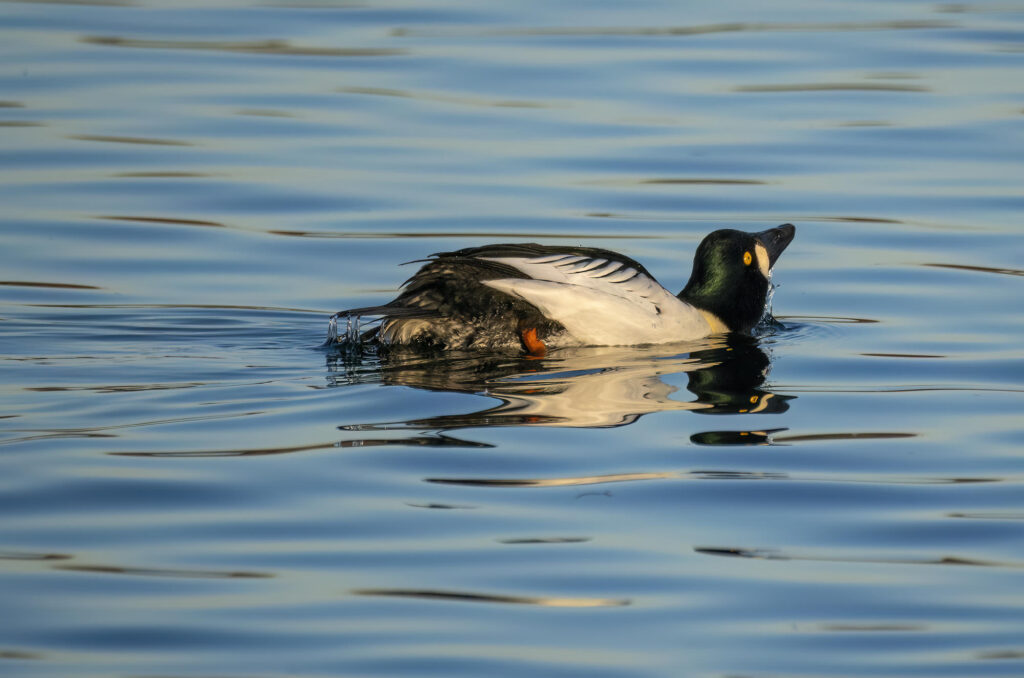
By laying his neck on the water, the drake demonstrates the level of his aggression towards a threat. The less neck he shows, the more aggressive he is feeling.
Masthead
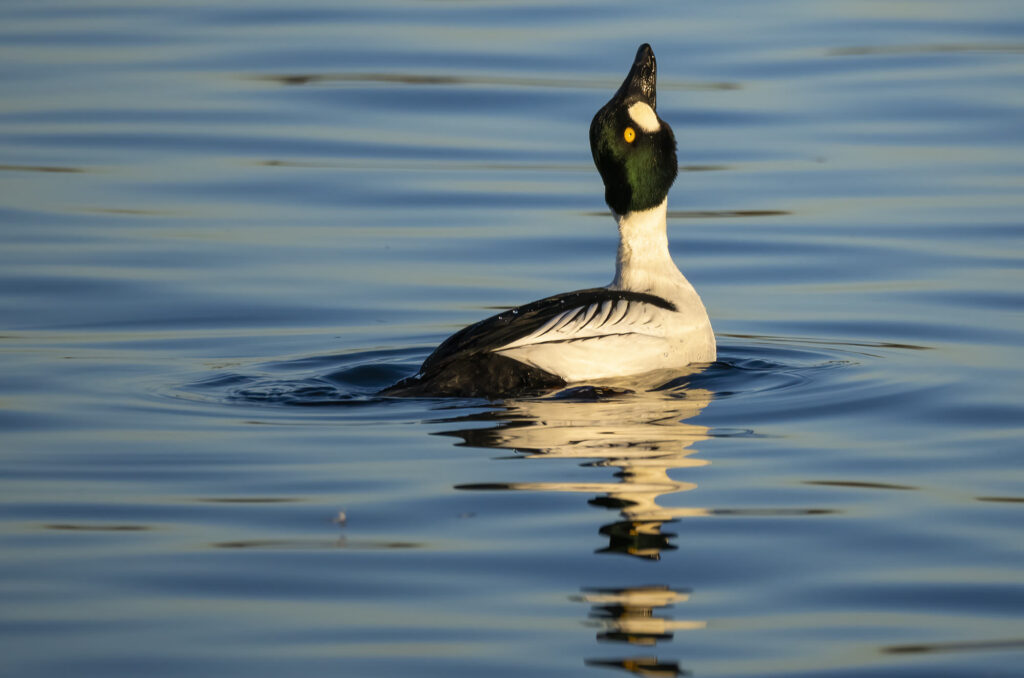
In the masthead pose, the drake displays by raising his head and extending his neck upwards with his beak pointed to the sky.
The kick
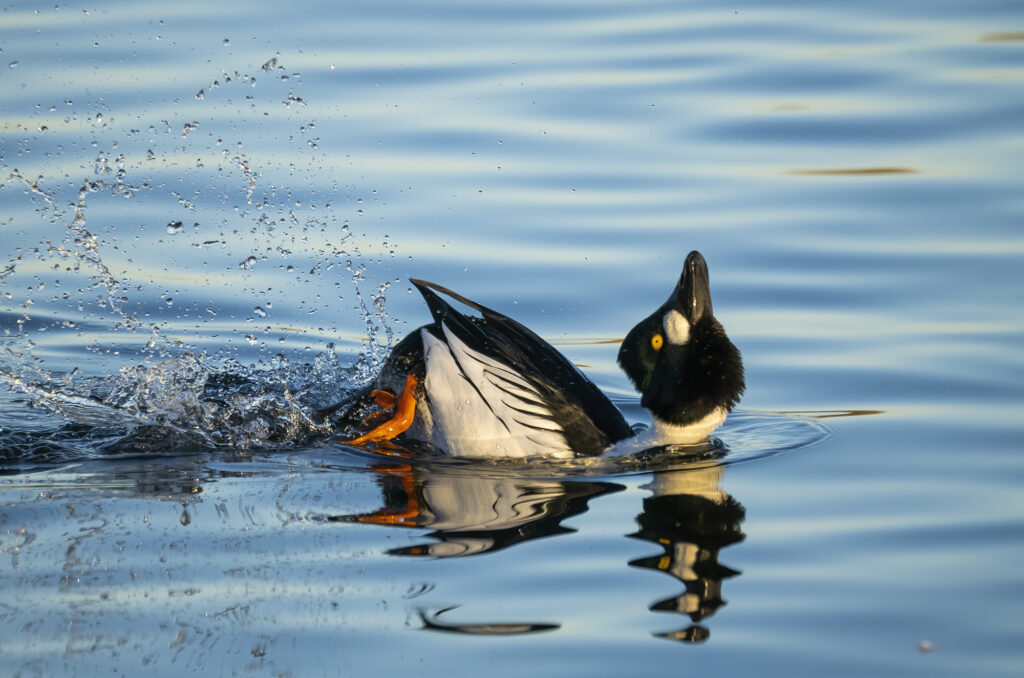
The image above shows how the male uses his feet to kick up the water behind him in this dramatic display. Sometimes, this is preceded by the head throw – where the drake bends his neck backwards so that his head is on his rump before thrusting it forward.
Posing for portraits
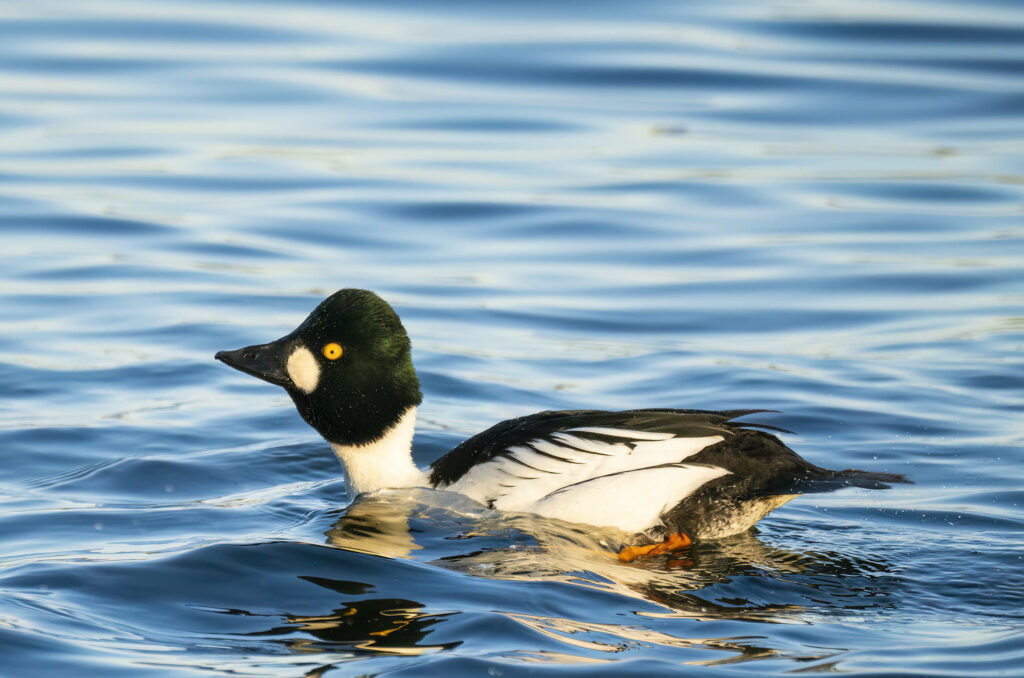
Although the males get a lot of attention from photographers, with their fancy dance moves and striking plumage, the chestnut-headed female goldeneye is far from drab. She also has her part to play in the courtship ritual – performing the jiving pose to indicate she has selected her mate. She will also chase away other males who try to court her after she has chosen her partner.
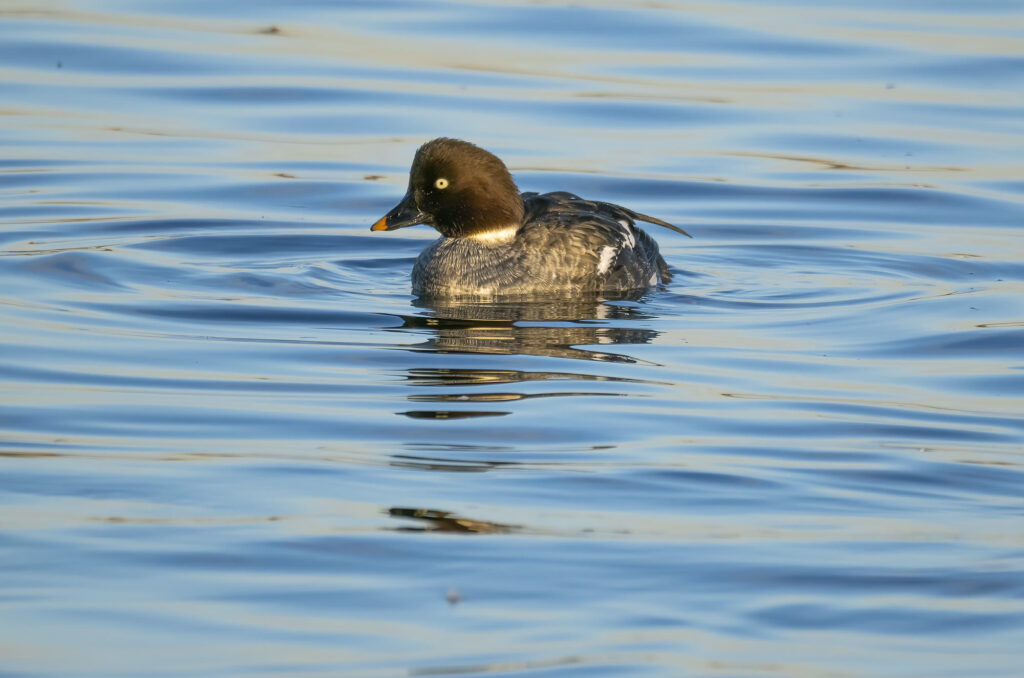
Both sexes have the distinctive dome-shaped head, which the scientific name of the species – Bucephala (bull-headed) – refers to and the bright yellow eye, which you can spot from a distance. Also, look out for them disappearing without warning as they dive for their preferred dinner of mussels, insect larvae, small fish or plants. They may take up to a minute to surface again, which is worth considering when attempting to capture images of their stunning plumage in warm winter light.
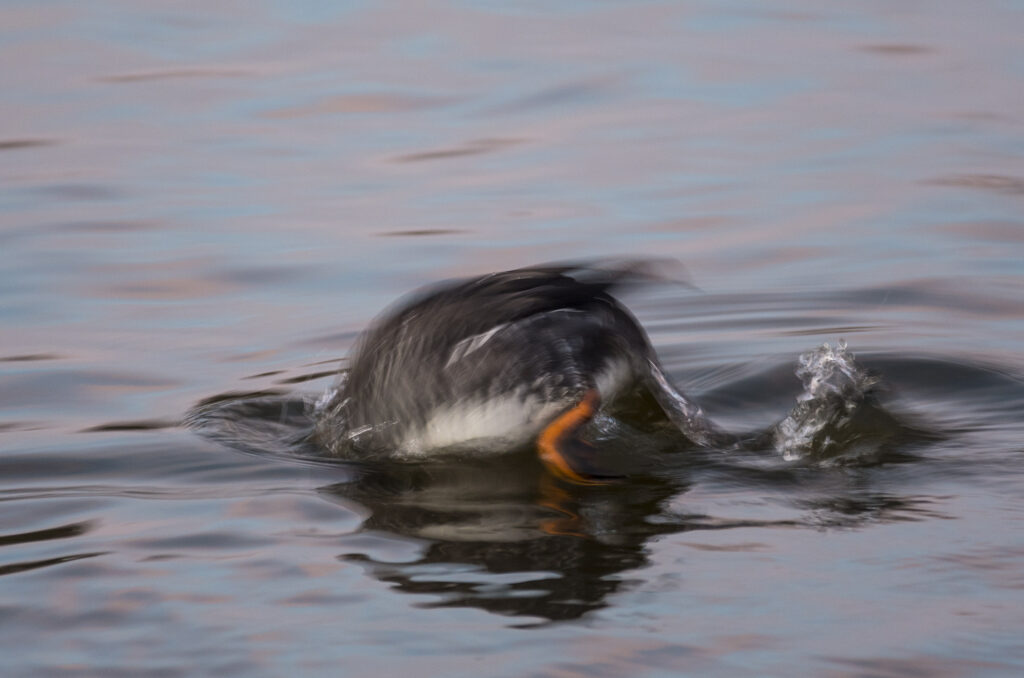
Bouncing back
In winter, goldeneyes from Northern Europe visit the UK. Your best chance of seeing these birds is on a deep lake or reservoir. However, a small number of goldeneyes also nest in Scotland during the breeding season, which they first did in 1970.
Goldeneyes usually nest in tree cavities close to water, up to forty feet above the ground. The chicks leave the nest only a day after hatching and have to jump from the nest hole, one after the other, down to where their mother is waiting and calling for them. In the Scottish highlands, specially designed boxes attached to trees have attracted them to nest. However, there are still only around 200 breeding pairs in this country – so an opportunity to photograph a goldeneye family in Britain is unlikely.
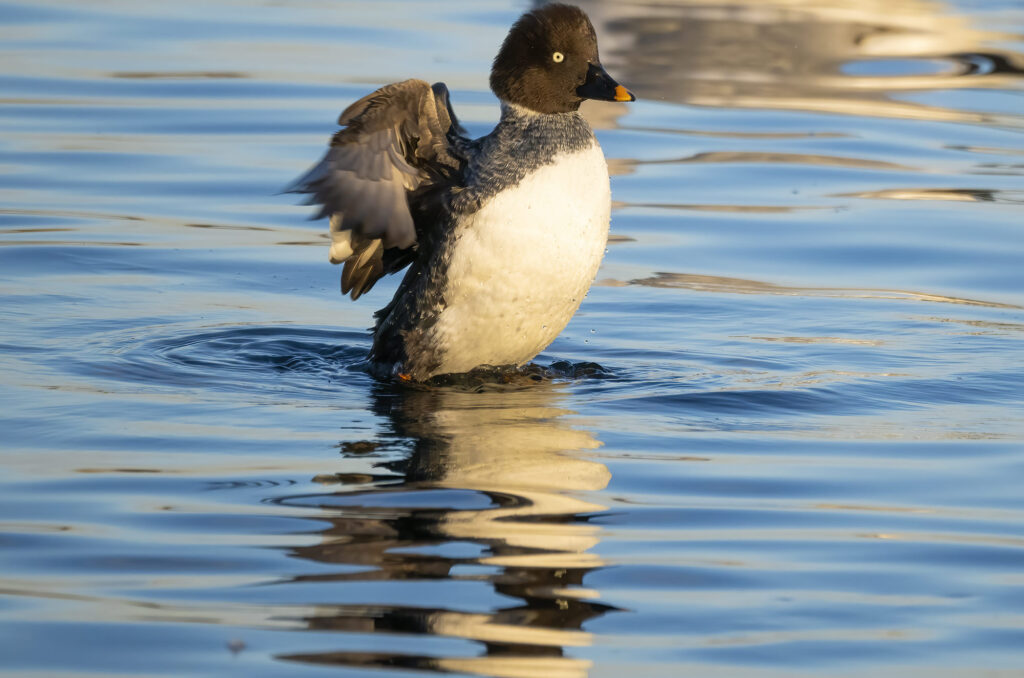
Visitors to the Cairngorms National Park are helping this red-listed bird to bounce back by staying away from the water during the goldeneye breeding season. Since requesting people avoid water activities at the Muir of Dinnet Reserve’s Loch Kinord in 2021, the goldeneyes have increased from just one brood and four ducklings in 2020 to more than 25 young goldeneyes fledging in 2023. Let’s hope that people continue this restraint and the goldeneye numbers continue to grow – a great example of how small actions by humans can make a huge difference to wildlife.
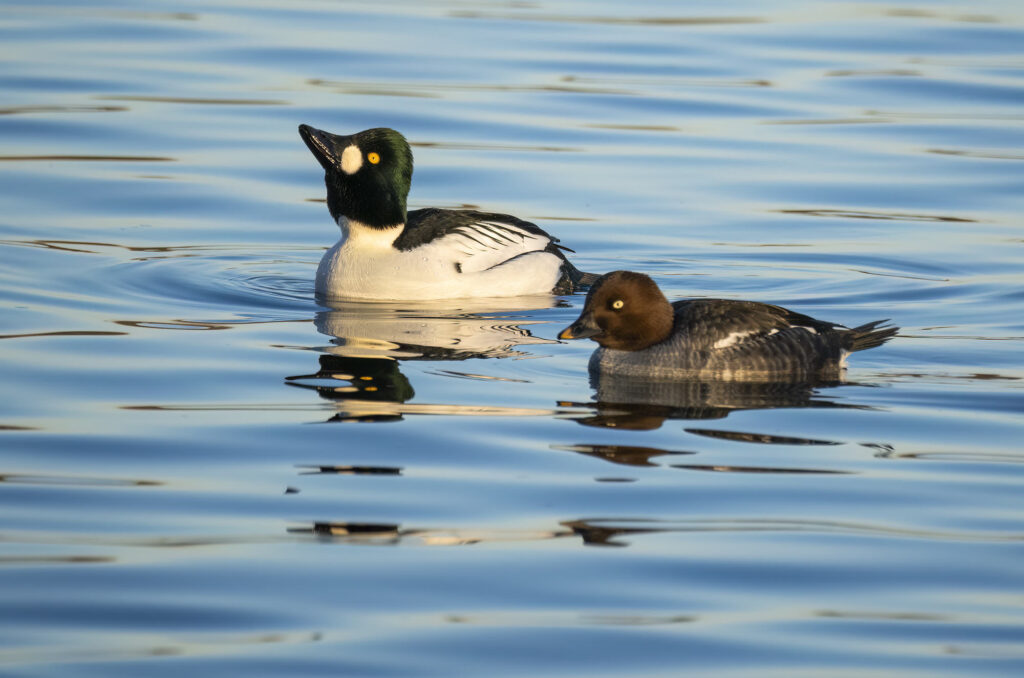
So, in recent years, I have discovered that while James Bond may have his licence to kill, goldeneyes have a licence to thrill. Even on the quietest day on the calmest of waters, these dynamic diving ducks can provide the perfect opportunity for capturing some action. So, if you thought ducks were dull, have another look at the goldeneyes as they put the ‘wild’ into ‘wildfowl’ this winter.

